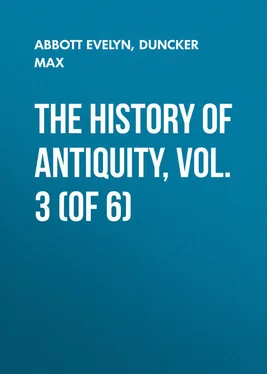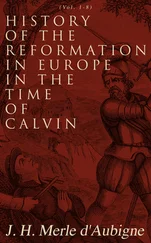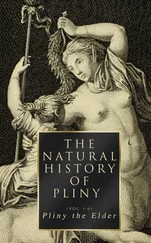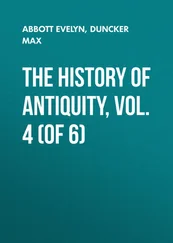Evelyn Abbott - The History of Antiquity, Vol. 3 (of 6)
Здесь есть возможность читать онлайн «Evelyn Abbott - The History of Antiquity, Vol. 3 (of 6)» — ознакомительный отрывок электронной книги совершенно бесплатно, а после прочтения отрывка купить полную версию. В некоторых случаях можно слушать аудио, скачать через торрент в формате fb2 и присутствует краткое содержание. Жанр: foreign_antique, foreign_prose, Историческая проза, на английском языке. Описание произведения, (предисловие) а так же отзывы посетителей доступны на портале библиотеки ЛибКат.
- Название:The History of Antiquity, Vol. 3 (of 6)
- Автор:
- Жанр:
- Год:неизвестен
- ISBN:нет данных
- Рейтинг книги:5 / 5. Голосов: 1
-
Избранное:Добавить в избранное
- Отзывы:
-
Ваша оценка:
- 100
- 1
- 2
- 3
- 4
- 5
The History of Antiquity, Vol. 3 (of 6): краткое содержание, описание и аннотация
Предлагаем к чтению аннотацию, описание, краткое содержание или предисловие (зависит от того, что написал сам автор книги «The History of Antiquity, Vol. 3 (of 6)»). Если вы не нашли необходимую информацию о книге — напишите в комментариях, мы постараемся отыскать её.
The History of Antiquity, Vol. 3 (of 6) — читать онлайн ознакомительный отрывок
Ниже представлен текст книги, разбитый по страницам. Система сохранения места последней прочитанной страницы, позволяет с удобством читать онлайн бесплатно книгу «The History of Antiquity, Vol. 3 (of 6)», без необходимости каждый раз заново искать на чём Вы остановились. Поставьте закладку, и сможете в любой момент перейти на страницу, на которой закончили чтение.
Интервал:
Закладка:
Tiglath Pilesar held the western regions of the table-land of Iran in dependence. He ruled as king over Babylonia, over the whole region of the Euphrates down to the borders of Elam and the shore of the Persian Gulf; and in the North also he led the armies of Assyria to victorious campaigns. His tablets tell us that he incorporated with Assyria the land of Nairi, i. e. the region between the upper Zab and the upper Tigris, that he defeated king Sarduarri of Ararat (Urarti), who had rebelled against him, took his camp and besieged him in his city of Turuspa; that he set up "an image of his majesty" there, and laid waste the land of Ararat far and wide. 28 28 Frag. 4, ll. 12-23 in G. Smith, "Disc." pp. 271, 272.
Afterwards Sarduarri and Sulumal of Milid (Melitene) and Kustaspi of Kummukh (Gumathene), each trusting to the power of the other, rebelled; these he defeated, and took captives to the number of 72,950 men. In the middle of the battle Sarduarri rode away: he (Tiglath Pilesar) took the seal from his neck, his neck-band, his royal chariot, and his couch, and dedicated them to Istar of Nineveh. 29 29 Frag. 5 in G. Smith, loc. cit. p. 272, 273.
The inscriptions further inform us that Kustaspi of Kummukh, Sulumal of Milid, and Vassurmi of Tubal gave tribute to Tiglath Pilesar, and when Vassurmi was negligent in the service of Assyria and did not appear before his face, Tiglath Pilesar sent his chief captain against him and set up Chulli to be king of Tubal in Vassurmi's place. 30 30 The large inscription, lines 57-59, 64, 65 in G. Smith, loc. cit. p. 263.
The list of rulers puts the first war of Tiglath Pilesar in the year 743 B.C., the second campaign against Ararat and the princes leagued with him in the year 735 B.C.
Of the successes of Tiglath Pilesar in Syria we shall hear below. When he received the tribute of Hamath, Byblus, and Israel before the ninth year of his reign, i. e. in the year 738 B.C., Zabibieh, the queen of the Arabs, also paid tribute. 31 31 Frag. 8, l. 33 in G. Smith, loc. cit. p. 279.
When he had overthrown Damascus, Israel, and the Philistines (732 B.C.), he fought against Samsieh, the queen of the Arabians, in the region of Saba, 32 32 Frag. 13, l. 3; cf. frag. 10, l. 16; frag. 12, l. 19 in G. Smith, pp. 283, 285, 286.
as we are told in a fragment of his annals, and took from her 30,000 camels, and 20,000 oxen. In the inscriptions which sum up the achievements of the king we are told that he subjugated the Nabatu (who must be sought to the south on the lower Euphrates), the Hagaranu (the Hagarites), the Pekudu (Pekod); 33 33 Tablet of Chalah, l. 6 in G. Smith, p. 254; stone of Chalah, ll. 6, 8, 13, p. 254.
that the distant tribes of Tema (the Temanites) and Saba (the Sabæans), on the borders of the setting sun, heard of his power, and submitted to him, brought gold, silver, and camels, and kissed his feet. 34 34 Stone of Chalah, ll. 53-55 in G. Smith, loc. cit. p. 262.
A fragment of the annals repeats this statement; on the borders of the land of the setting sun they heard of his power and his victories and submitted to him. 35 35 Frag. 13, loc. cit. p. 286.
Hence it was not only migratory tribes in the neighbourhood of Syria and the lower Euphrates, like the Pekod and Hagarites, whom Tiglath Pilesar forced to recognise his supremacy and pay tribute: his armies must have advanced from Syria and the lower Euphrates to the interior of Arabia, if the Temanites (I. 324) and the tribes of the South, "on the borders of the setting sun," i. e. the tribes of the South-west, the Sabæans, in "fear of his power and his victories," sent him tribute.
If the armies of Assyria reached no further than Deraeah in the interior of Arabia, it was still a vast stretch of country which they traversed in the eighteen years in which Tiglath Pilesar sat on the throne. Yet they also reached Lake Hamun and the land of the Arachoti in the East on the further side of the Persian Gulf. On the terrace of Chalah which supported the royal citadels Tiglath Pilesar built himself a palace to the south of the house of Shalmanesar II. It is the central palace of the explorers. The great inscription on one of the marble slabs found in the floor in the ruins tells us that he built his royal abode in the midst of Chalah for his glory; that he placed it higher above the bed of the Tigris than the palaces of his predecessors; that he adorned it with costly decorations, and placed in it the tributes of the kings of the Chatti, the princes of the Aramæans and Chaldæans, who had bowed their might at his feet 36 36 Ll. 67-86 in G. Smith, loc. cit. p. 264, 265.
The inscription begins with the words, "Palace of Tiglath Pilesar the great king, the mighty king, the king of the nations, the king of Assyria, the high priest of Babylon, the king of Sumir and Accad, the king of the four quarters of the earth, the mighty warrior, who in the service of Asshur his lord has marched through the lands, swept over them like a storm, treated them as captives; the king, who, under the protection of Asshur, Samas, Merodach, the great gods, his lords, ruled from the sea of Bit Yakin as far as Bikni, and from the sea of the setting sun ( i. e. the Mediterranean) as far as Muzur (Egypt)." 37 37 G. Smith, "Disc." ll. 1-4, p. 256, 257.
The second shorter inscription says in a similar manner: "Palace of Tiglath Pilesar the great king, the mighty king, the king of the nations, the king of Assyria, the king of Babylon, the king of Sumir and Accad, the king of the four quarters of the earth, the mighty warrior, who in the service of Asshur, his lord, has trodden to pieces like clay all who hated him, has washed them away like a flood and made them into shadows – the king who marched out under the protection of Nebo and Merodach, the great gods, and reigned from the sea of Bit Yakin to the land of Bikni, to the rising sun, and from the sea of the setting sun to Muzur, who possessed all lands from the setting to the rising and ruled over their kingdoms." 38 38 G. Smith, loc. cit. p. 254.
Of this proud palace but scanty ruins remain. One of the successors of Tiglath Pilesar, who ascended the throne of Assyria 46 years after him, caused the slabs on which Tiglath Pilesar had depicted his campaigns and victories together with the explanatory inscriptions above them, to be taken away, in order to have them smoothed, and placed when filled with pictures of his own achievements in the house which he built in the south-west corner of the terrace of Chalah. This successor died during the building of his house. This is clear from the fact that slabs and inscriptions of the palace of Tiglath Pilesar, intended for the new structure, have been found partly in the remains of the old building and partly in the new structure, with the defacement partially carried out. 39 39 The three private documents on the sale of a slave, the loan on the mortgage of a field, and the interest and security for an advance, which are placed in the time of Tiglath Pilesar III., are given in Oppert et Ménant, "Docum. Juridiq." p. 153 sqq.
CHAPTER II.
THE PROPHETS OF ISRAEL
The overthrow of the house of Omri had not raised the power of the kingdom of Israel. Jehu, it is true, sent tribute to Shalmanesar II. king of Assyria (842 B.C.). But in spite of this subjection to the great king on the Tigris, neither Jehu nor his son Jehoahaz was in a position to repel the attacks of the princes of Damascus, Hazael and Benhadad III.; the whole region to the East of the Jordan, the land of Gilead, had to be conceded to Damascus after the most cruel devastation of that district and of all Israel. It was the distress into which Bin-nirar III. of Asshur brought Damascus which first afforded respite to Israel in the last years of Jehoahaz, though tribute for this service also had to be paid to Assyria (803 B.C.). His successor, king Joash (798-790 B.C.) was now able to wrest from Damascus at least those cities which his father had lost, and the son of Joash, Jeroboam II. (790-749 B.C.), the fourth sovereign of the house of Jehu, succeeded in gaining the upper hand over Damascus, in completely reconquering the land of Gilead, and inflicting heavy blows on Hamath. The land which he conquered from Hamath he retained; the Books of Kings mention the brave deeds of Jeroboam II., how "he set up again the borders of Israel, from the land of Hamath to the sea of the plain." During his long and powerful reign – he sat on the throne for 41 years 40 40 2 Kings xiv. 23; Amos vi. 2, 14.
– agriculture was developed, trade became again active, and, as it seems, very lucrative. In Samaria, the metropolis, there were splendid houses, the inhabitants of which lived in magnificence and luxury. 41
Интервал:
Закладка:
Похожие книги на «The History of Antiquity, Vol. 3 (of 6)»
Представляем Вашему вниманию похожие книги на «The History of Antiquity, Vol. 3 (of 6)» списком для выбора. Мы отобрали схожую по названию и смыслу литературу в надежде предоставить читателям больше вариантов отыскать новые, интересные, ещё непрочитанные произведения.
Обсуждение, отзывы о книге «The History of Antiquity, Vol. 3 (of 6)» и просто собственные мнения читателей. Оставьте ваши комментарии, напишите, что Вы думаете о произведении, его смысле или главных героях. Укажите что конкретно понравилось, а что нет, и почему Вы так считаете.












